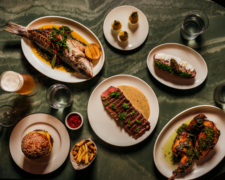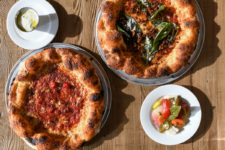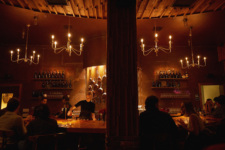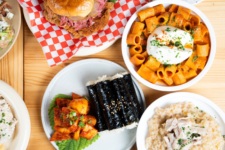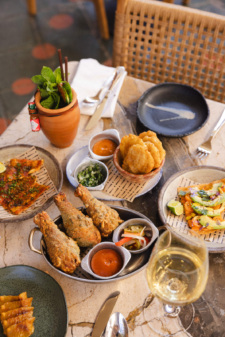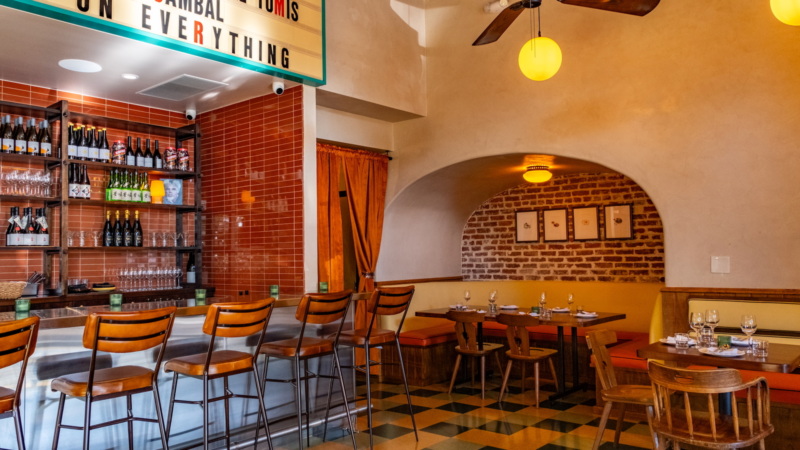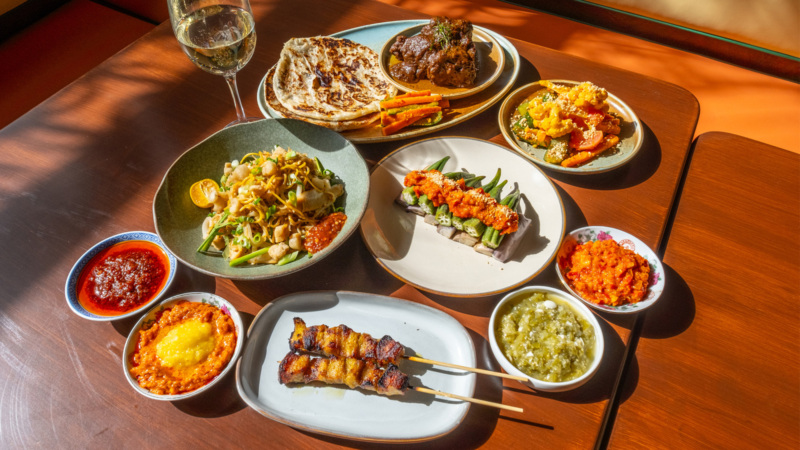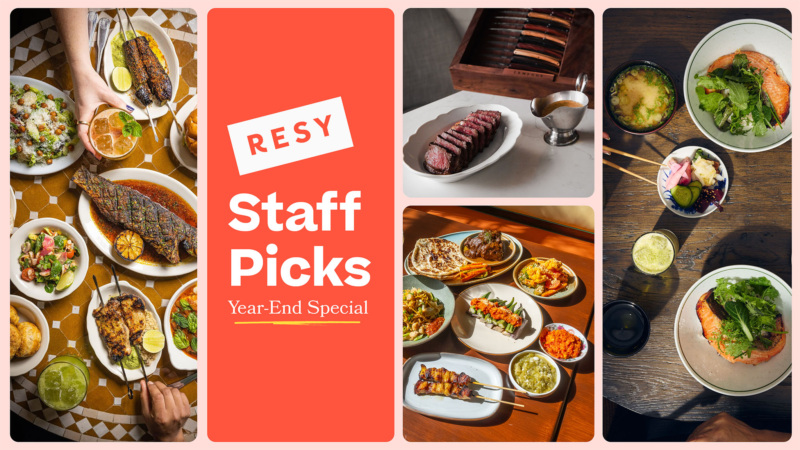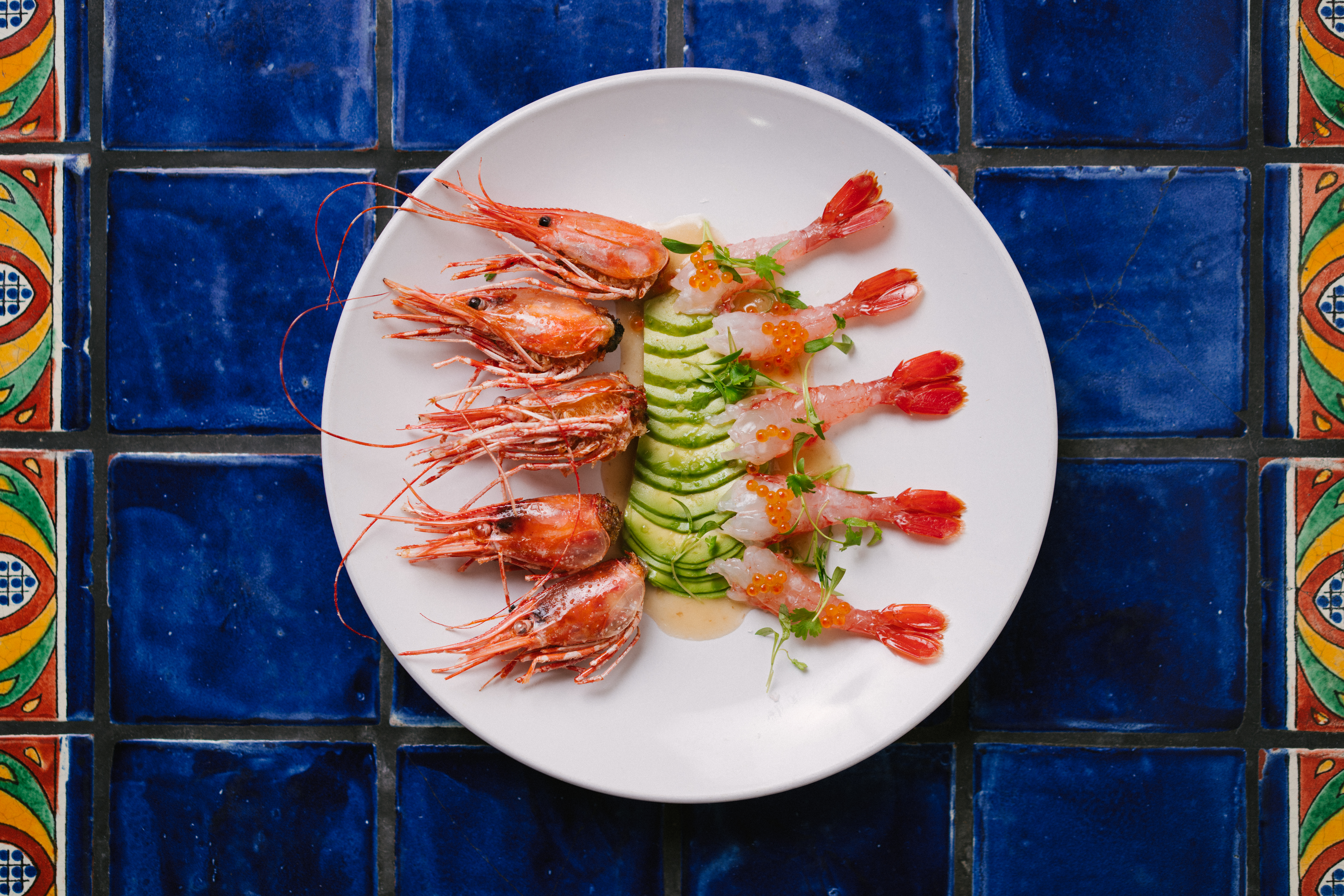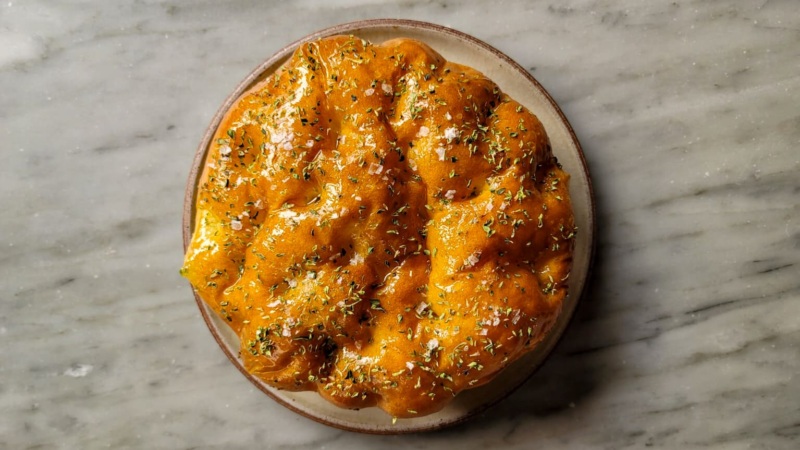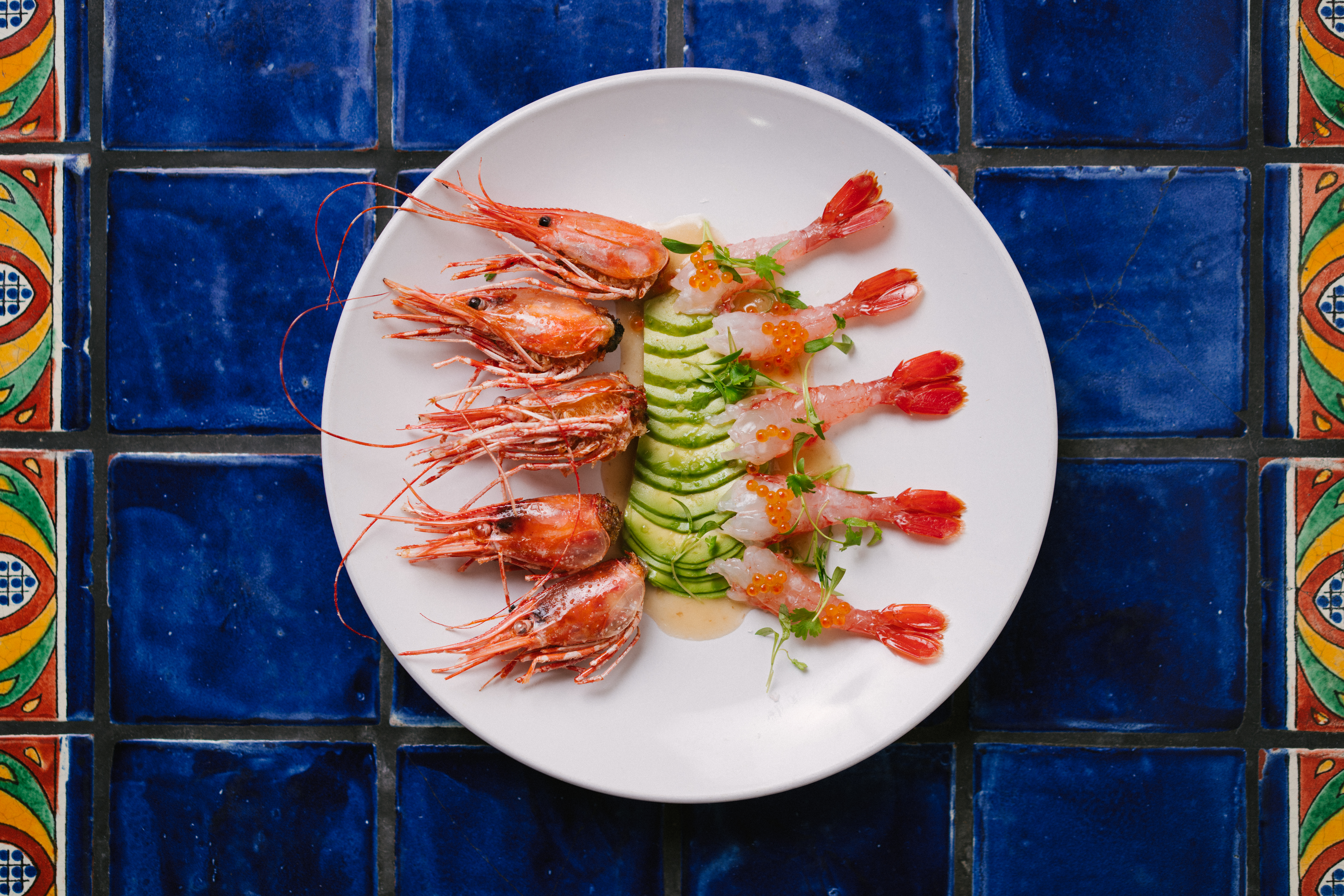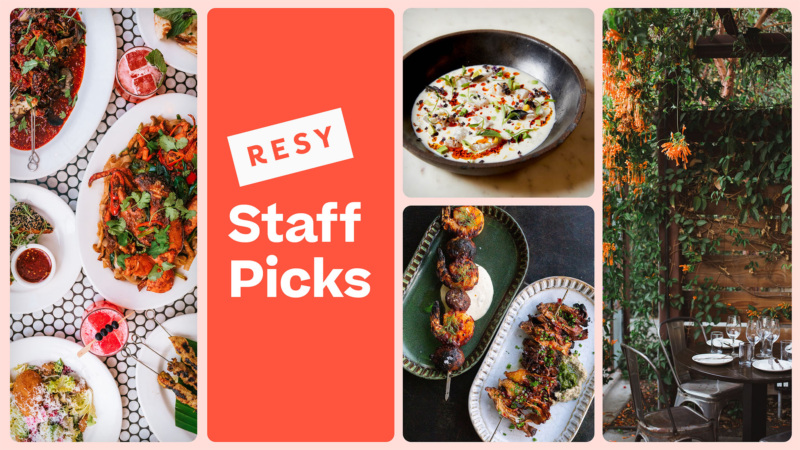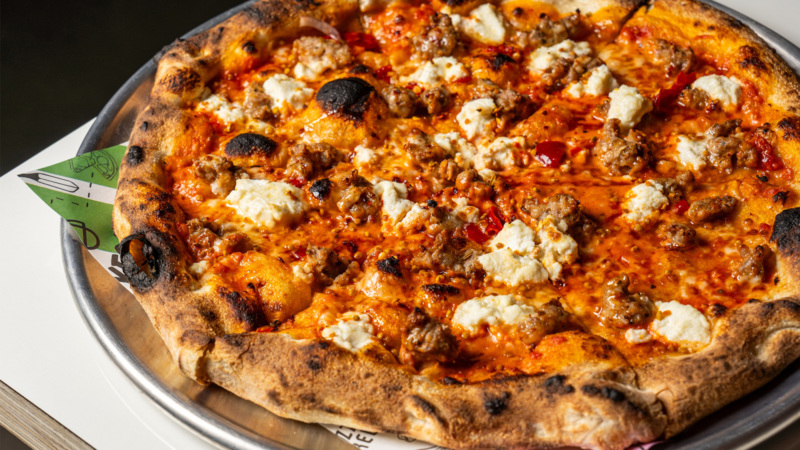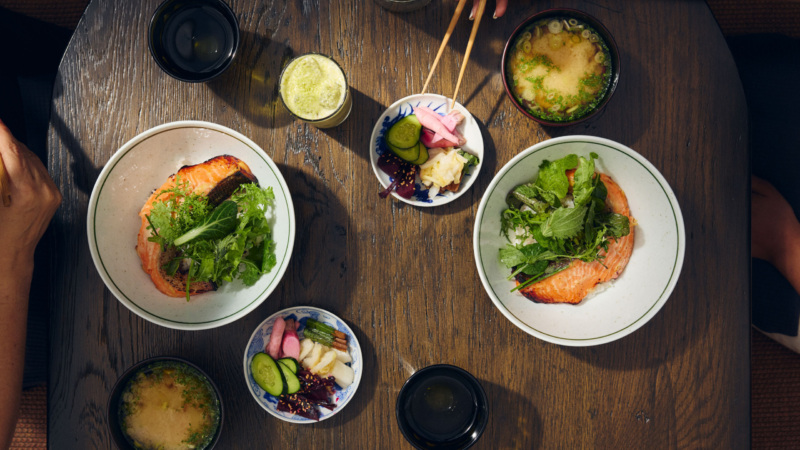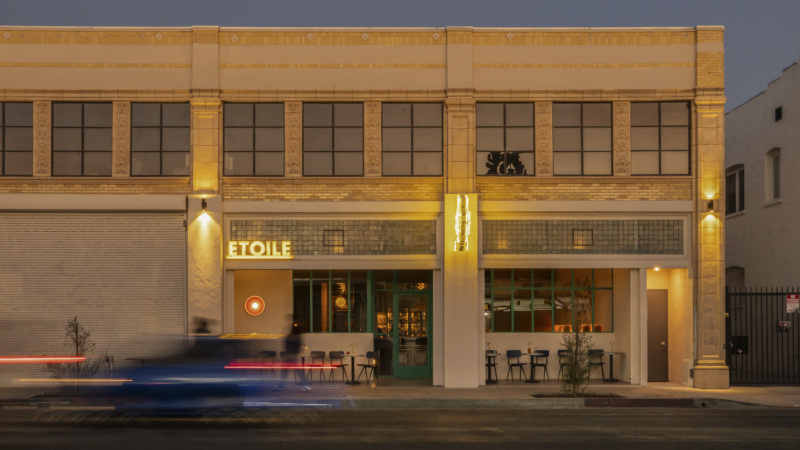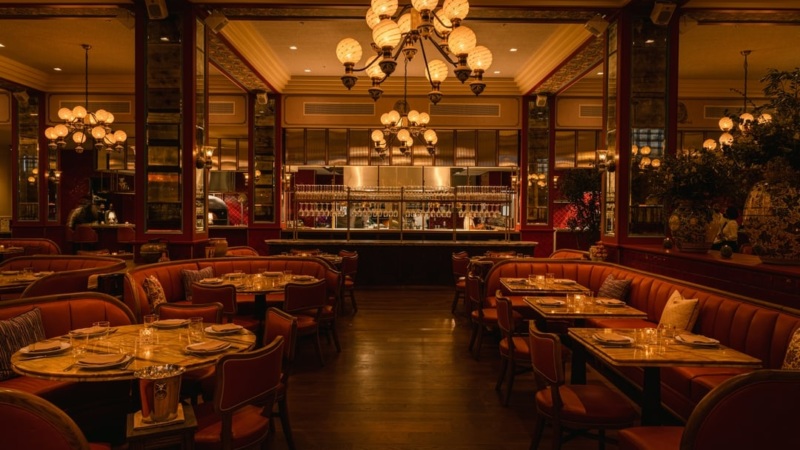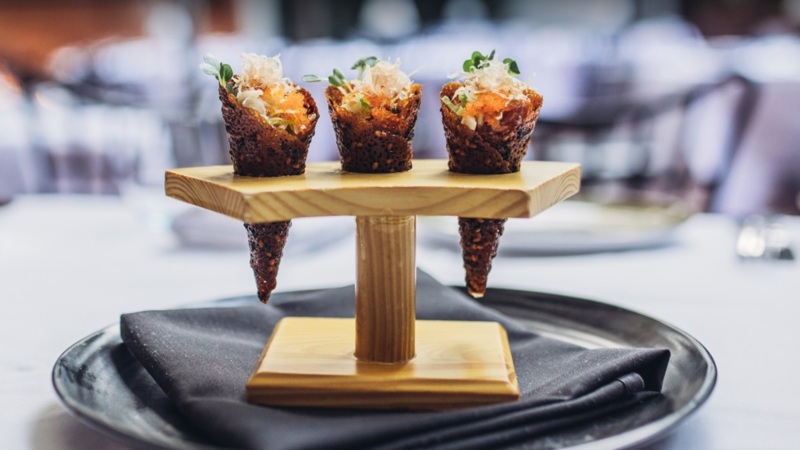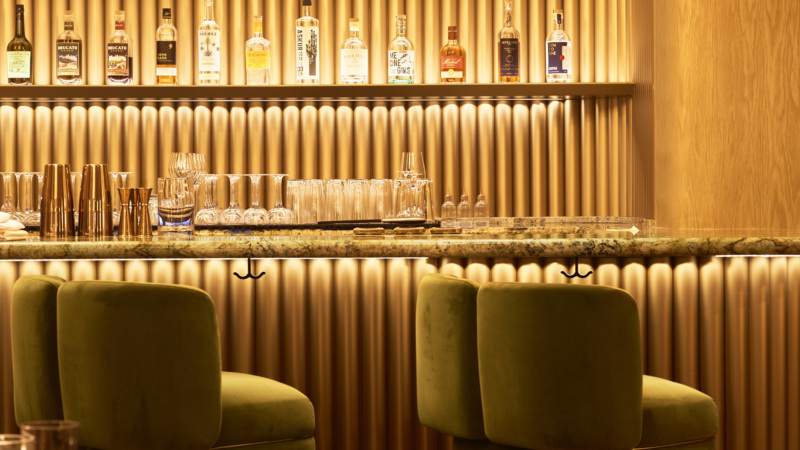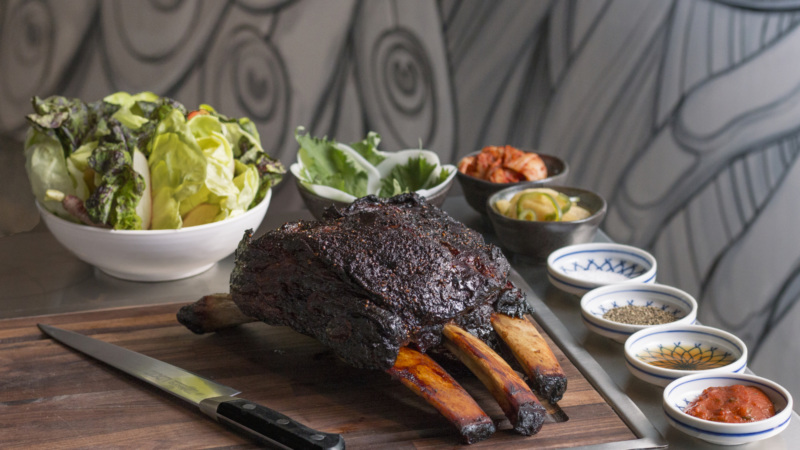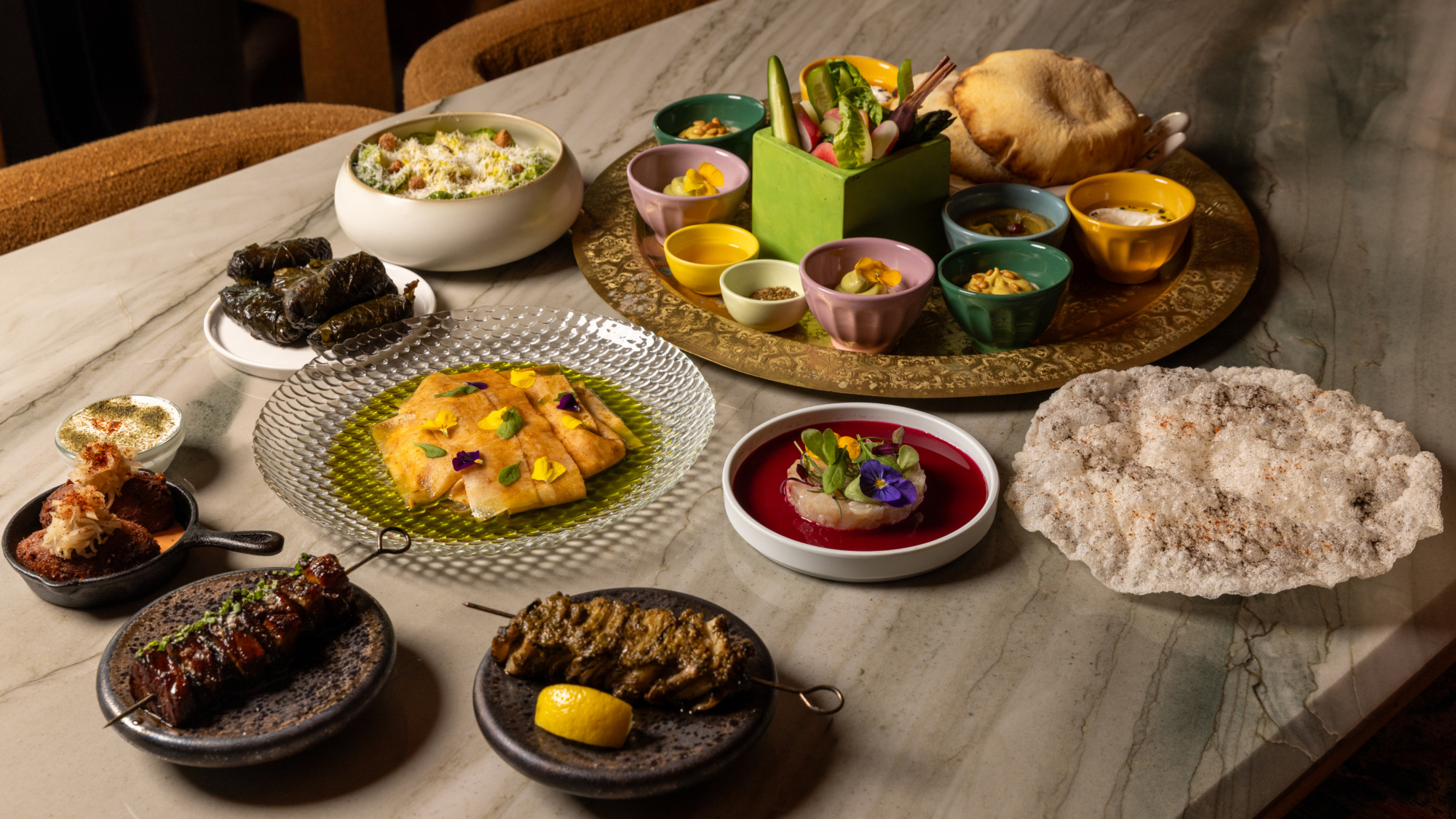
Everything You Need to Know About Layla, a Middle Eastern Oasis in Santa Monica
What happens when you combine breezy beachside vibes, generations-old Jordanian recipes, and precise French culinary technique? You get Layla, an elegant yet approachable Middle Eastern restaurant in the heart of Santa Monica’s tourist zone.
Since opening its doors, Layla has impressed locals with Middle Eastern fare filtered through a French haute cuisine lens. Wagyu ribeye, triple-cooked fries, and endive salad share menu space with lamb shank, knafeh, and one of the best mezze platters around. In some cases, chef Chris Sayegh has stuck to tradition. In others, he has added modern twists to classic dishes. And always, he accomplishes it with refinement and flare. Here’s everything you need to know about this Westside newcomer.
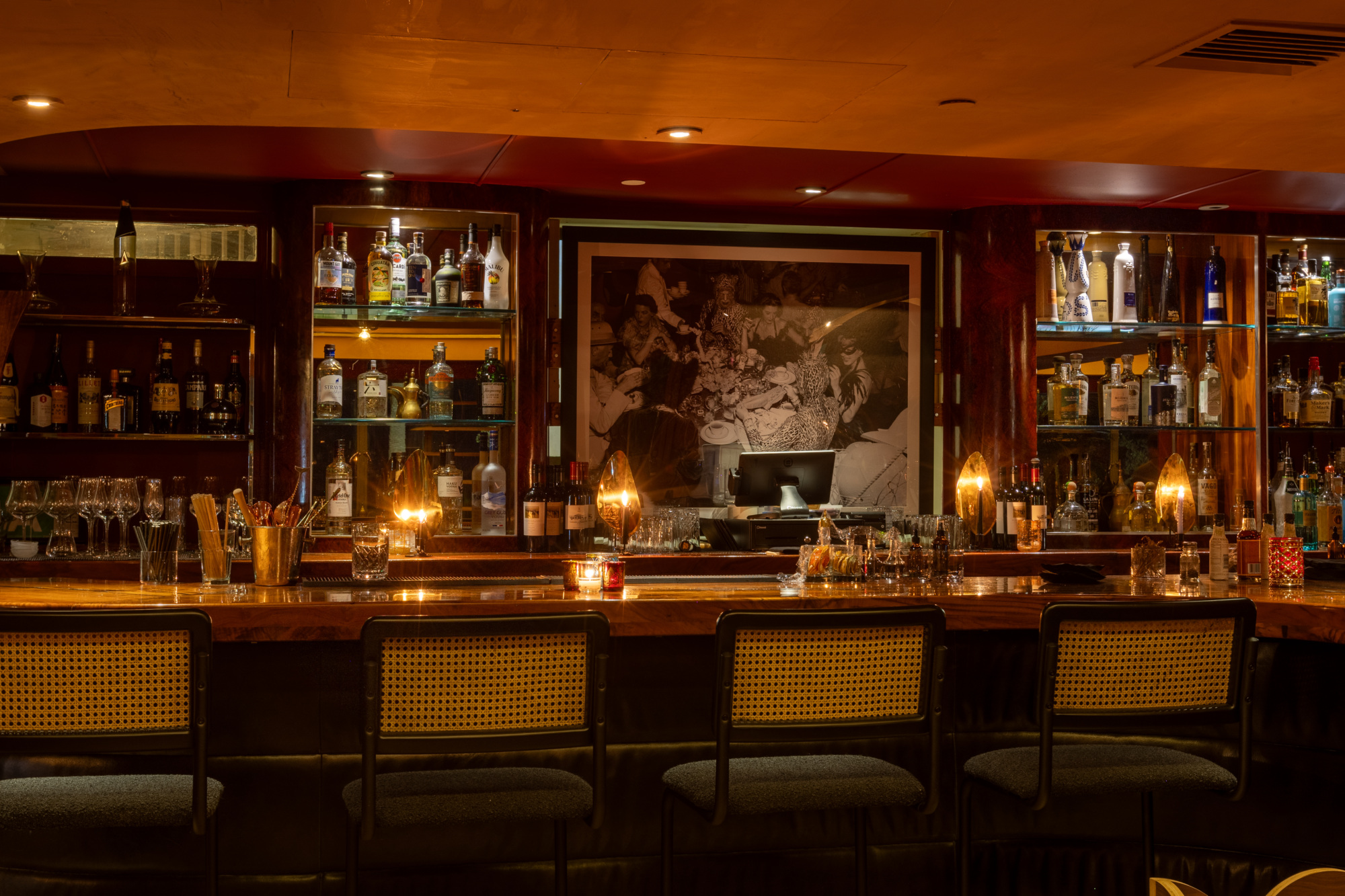
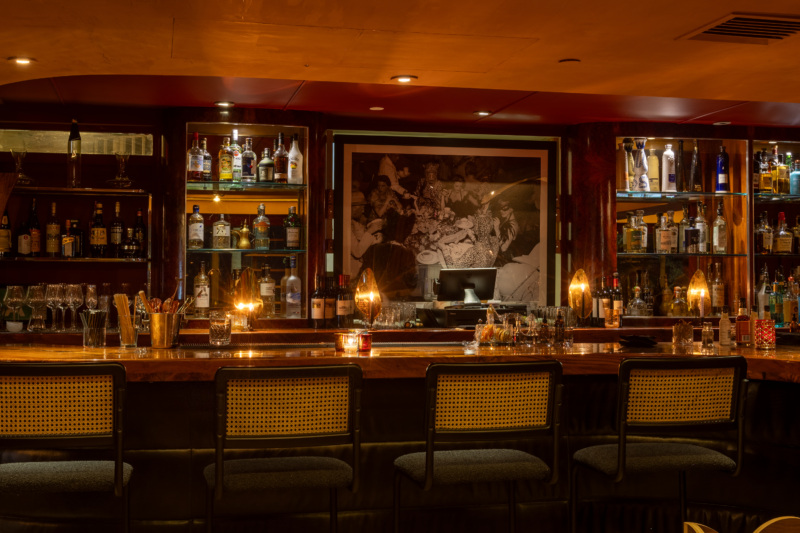
The location is prime Santa Monica
Nestled between the Third Street Promenade and the Pacific Coast Highway, Ocean Avenue boasts a few noteworthy architectural sites, such as the quirky Camera Obscura (now shuttered), the Art Deco Georgian Hotel, and the Sonder The Beacon Santa Monica, which locals may know as the Hotel Shangri-La. Opened in 1940, the structure was famous for its rooftop bar and its Streamline Moderne architecture, meant to evoke an ocean liner.
In 2023, the Shangri-La became a Beacon property, with Boulevard Hospitality Group overseeing the revamp of both the ground floor restaurant and the rooftop bar. The former became Layla, while the latter is now the glamorous, tropically-themed Coco Club, offering an almost 300-degree view of the Pacific Ocean and the Santa Monica Pier. Both are great spots to watch the sunset.
Layla, which Sayegh and his partners envisioned as an upscale Moroccan bazaar brought inside, is long and narrow, with an intimate vibe once the wooden shutters on the many windows are pulled tight. The tables are done up in marble or ornate tile, and the elegant chairs have soft, muted fabrics, surrounded by earthy, burnt orange columns that add a touch of solemnity. You won’t forget that you’re in a hotel restaurant, but Layla is chic enough for a formal dinner and romantic enough for a date night. It’s also got enough energy that you could bring a small or mid-size group here for a celebration. (For a more raucous time, head upstairs to the Coco Club.)
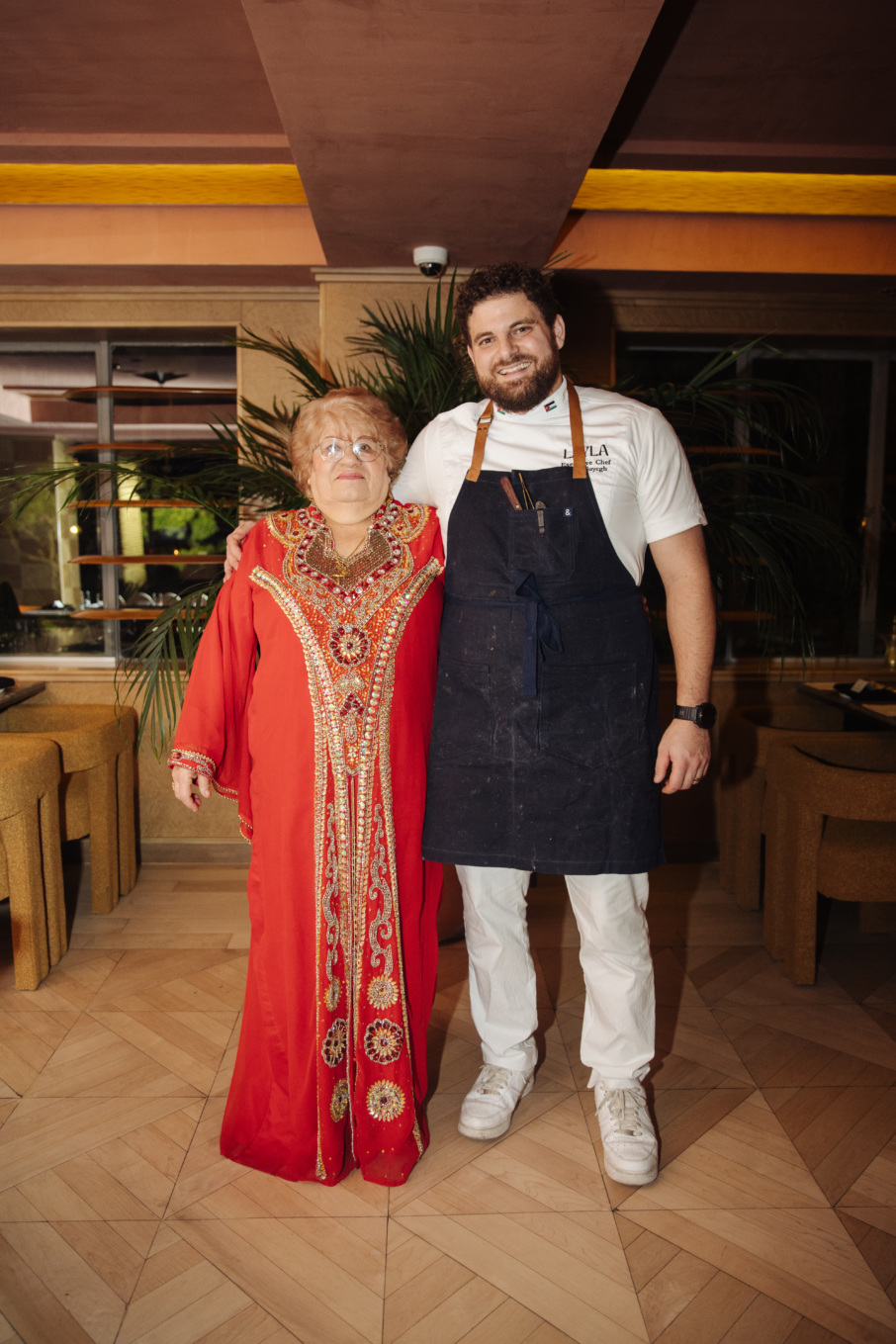
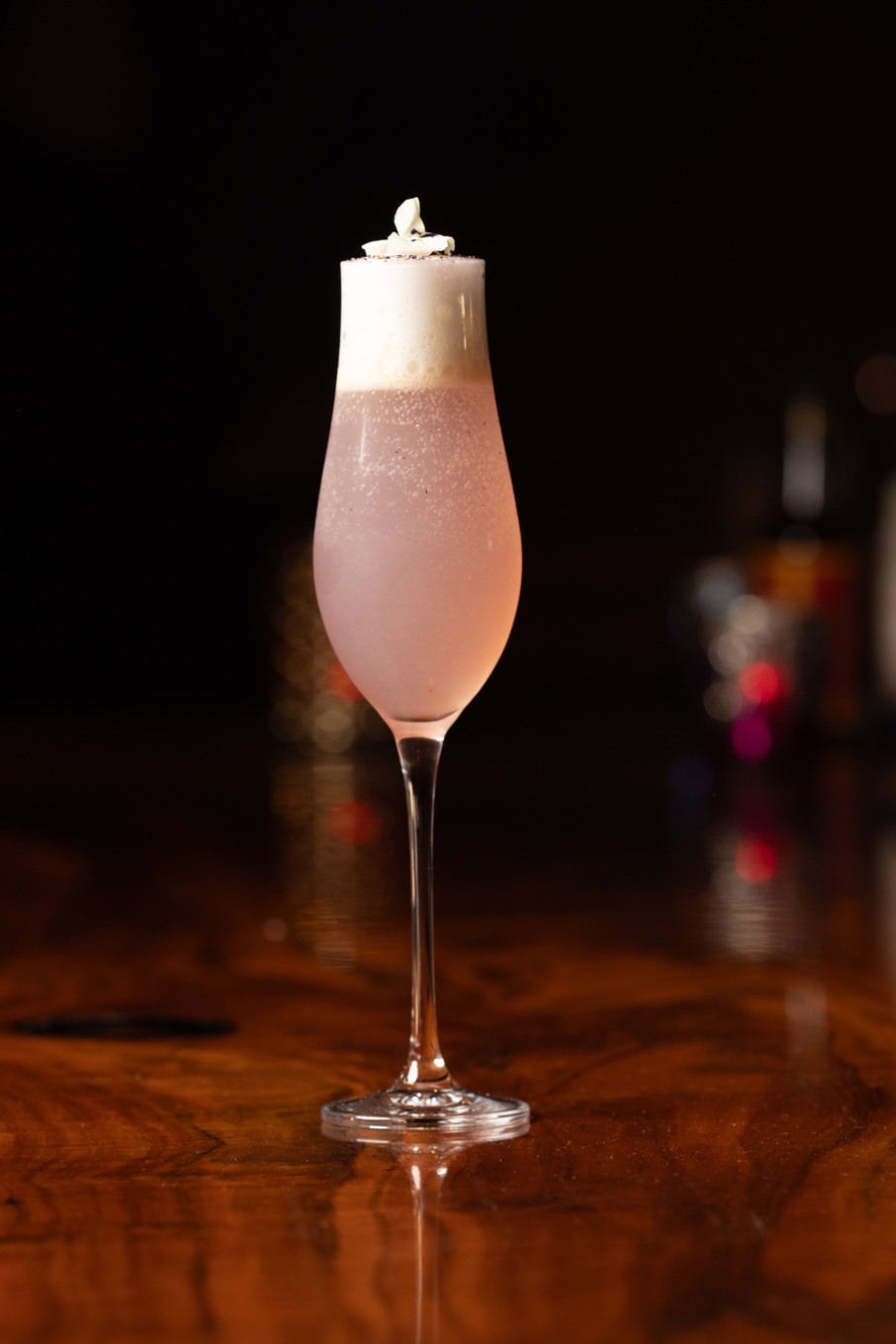
The restaurant is named for the chef’s grandmother
Born in New York, Sayegh spent a lot of time in Southern California after his mother and father, who are both Jordanian, divorced. “My parents split up and they both remarried Italians, so I had this very rich food culture in my family,” he says. He left UC Santa Cruz, where he was studying molecular cell biology, to pursue cooking.
In Los Angeles, he worked for Josiah Citrin at Mélisse and Michael Cimarusti at Connie and Ted’s and Providence. After that, he turned his focus to cannabis cuisine. Using the Herbal Chef moniker, he catered private dinners and events at Nostalgia, a Santa Monica bar and lounge that closed in 2023.
Sayegh had always cooked with his jiddeh (that’s Arabic for “grandmother”) as well as his nana on his stepfather’s side. “Everybody in the family cooked, so from every direction, I was getting amazing food,” he says. But it wasn’t until he was 25, when he took a trip with his family through the Middle East, that he realized just how exceptional his grandmother was.
“My jiddeh was well-known in her village for her cooking. As somebody who loves food, going out, and trying to explore, I couldn’t find anything better than what I was being given at home. It really put into perspective how good she is,” Sayegh says.
When he had the opportunity to open his own restaurant, Sayegh wanted to focus on Jordanian food (as opposed to Lebanese, Persian, Armenian, or other Middle Eastern/Mediterranean cuisines, which are more readily available in Southern California). Naturally, he named the concept after his jiddeh, Layla, who is still alive and cooking.
You see his devotion to Jordanian recipes in dishes such as the wurrug dawali, or stuffed grape leaves. Here, they’re filled with rice and chunks of lamb shoulder, an ingredient you rarely see in this dish. But the signature flavor comes from the seasoning, a housemade spice blend known as hwajeh. “It’s truly magnificent,” Sayegh says, although he won’t share specifics, because “the recipe comes directly from my jiddeh.”
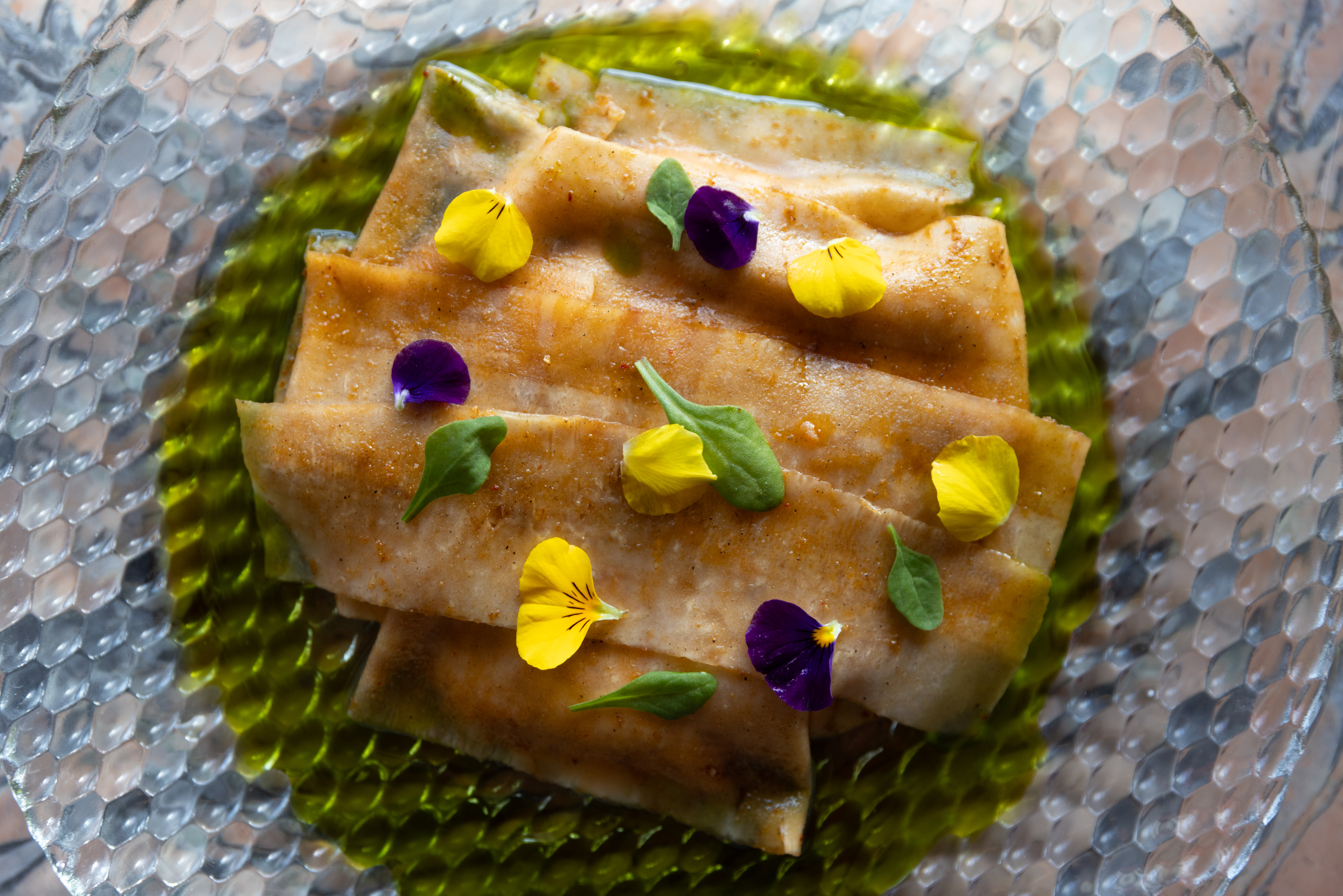
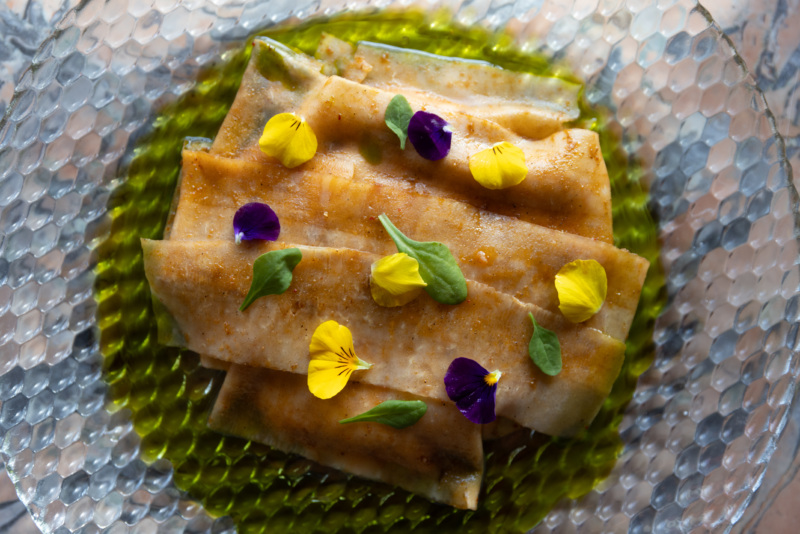
The recipes are a mix of traditional and new-school
Those familiar with Jordanian cuisine will recognize classics, like lamb mansaf, the national dish. It’s traditionally made in a large pot that’s flipped over so the lamb rests on the rice and is drizzled with a goat’s milk sauce. Sayegh reworked the recipe to make it easier to serve in a restaurant. At Layla, you get a lamb shank sitting on a bed of rice that’s topped with a green onion gremolata, for bite, and a bright, tangy calamansi vinegar. “It refines the dish a little bit and [helps introduce it to] people without feeling too esoteric,” Sayegh says.
Sayegh’s creativity shines when it comes to vegetable dishes like cauliflower, which he makes with a crisp za’atar crust. He tweaks the traditional mezze platter by aerating the hummus, adding tarragon to the smoky-salty-sweet eggplant dip, and incorporating hwajeh into the avocado crème fraîche. The pita bread, kissed by the flames of a wood-fired oven, is thick and fluffy.
One of Layla’s standout appetizers is a kebab of celery root that’s shaved into paper-thin sheets, blanched, marinated in garlic, cumin, coriander, and other spices, then charred on the grill until it gets crunchy. “That’s a really fun one because it’s hard for people to conceptualize that vegetables can taste that good,” Sayegh says.
Kohlrabi also gets a new spin — Sayegh shaves it, marinades it in harissa and yuzu, and plates it on a mound of smoky whipped manchego dusted with dukkah, a nutty spice blend made with pistachios. “You get all these different elements, you put them together, and it’s like, whoa, people aren’t expecting it. I think that’s what really excites me — teaching people to trust us,” Sayegh says.
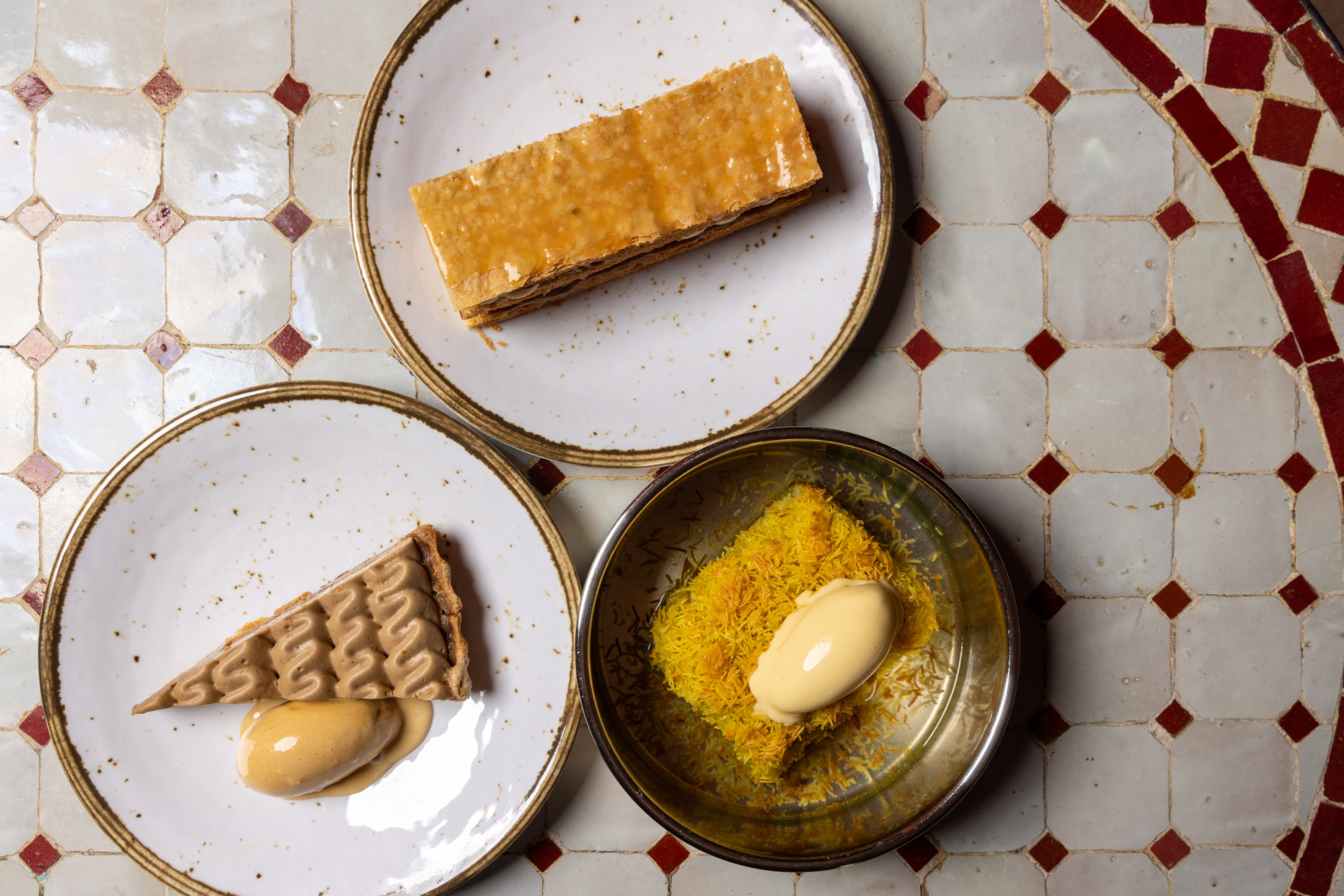
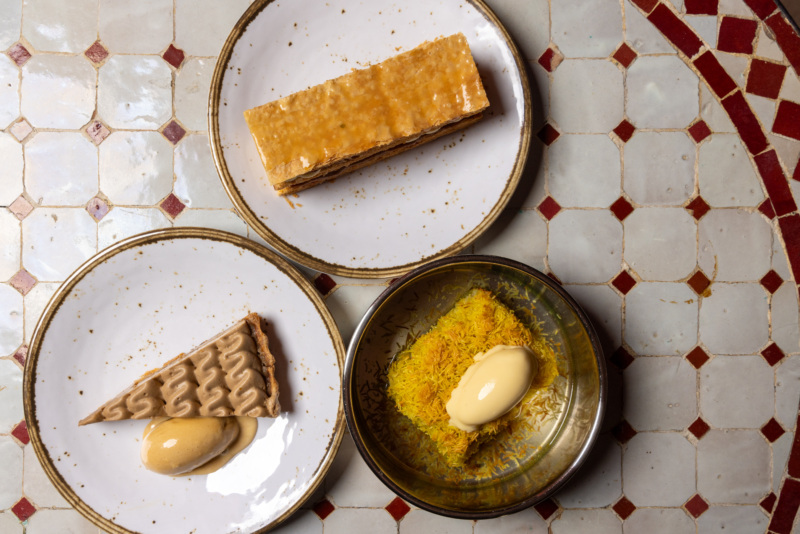
The cocktails also take a cue from the Middle East
“I really wanted the bar menu to be thinking outside the box for a Middle Eastern restaurant,” Sayegh says. “I didn’t want everything to be made with rose and date.” He turned to cocktail expert Dushan Zaric of New York bars Employees Only and Macao Trading Co. to develop the drinks.
The Layla Collins replaces gin with arak, a Levantine spirit distilled from grapes and aniseed, and adds mint simple syrup, green chartreuse, and clarified cucumber. The Midori spritz features a housemade honeydew purée to amp up the melon flavor, while the pistachio old fashioned includes pistachio-washed bourbon, marzipan, and mole bitters. Sayegh touts the baklava milk punch, which he describes as “liquid baklava,” and is served in a small carafe with a tidbit of (non-liquid) baklava alongside it. “The whole cocktail menu is like that,” Sayegh says. “We use all these Middle Eastern flavors, but they don’t overpower the drink.”
The dessert menu is small but mighty
Although Layla only offers three desserts, each one packs a punch. Sayegh updates knafeh, a traditional Middle Eastern dessert made with crisp noodles or phyllo dough, cheese, and sweet syrup, by replacing the usual akkawi, a stringy cheese, with a blend of soft cheeses including mascarpone and ricotta, then tops it with cinnamon gelato.
He has turned the baklava into a mille-feuille with whipped white chocolate, orange blossom ganache, and a nut paste made from walnuts and pecans between layers of lightly sweetened puff pastry. And the Layla sundae features soft-serve ice cream with a date-caramel sauce, chopped pistachios, and Chantilly cream — a fittingly sweet end to a globetrotting meal along the coast.
Elina Shatkin is a multimedia journalist, podcast producer, and filmmaker. She is currently a producer for Good Food at KCRW and has previously worked at LAist/KPCC, L.A. Weekly, and The L.A. Times. Follow her here. Follow Resy, too.
Discover More
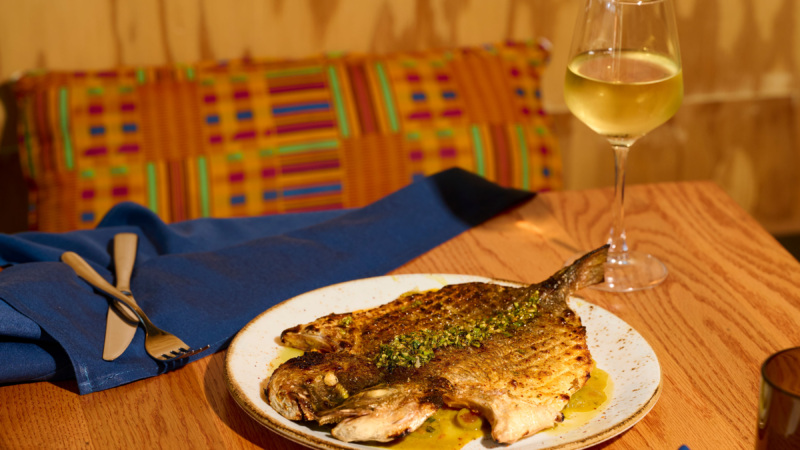
Stephen Satterfield's Corner Table


